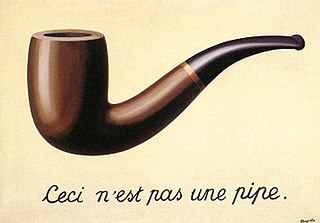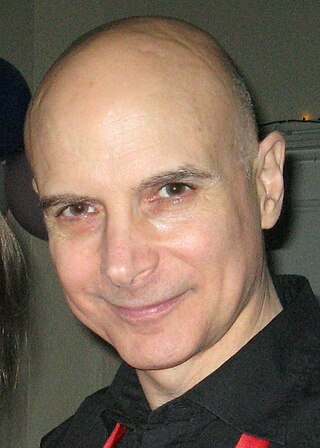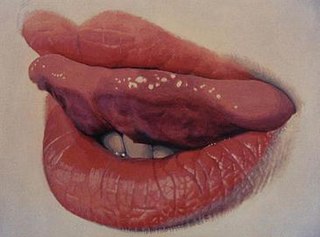Related Research Articles

Surrealism is a cultural movement that developed in Europe in the aftermath of World War I in which artists depicted unnerving, illogical scenes and developed techniques to allow the unconscious mind to express itself. Its aim was, according to leader André Breton, to "resolve the previously contradictory conditions of dream and reality into an absolute reality, a super-reality", or surreality. It produced works of painting, writing, theatre, filmmaking, photography, and other media.
Conroy Maddox was an English surrealist painter, collagist, writer and lecturer; and a key figure in the Birmingham Surrealist movement.

Sir Roland Algernon Penrose was an English artist, historian and poet. He was a major promoter and collector of modern art and an associate of the surrealists in the United Kingdom. During the Second World War he put his artistic skills to practical use as a teacher of camouflage.
Emma Frith Bridgwater, known as Emmy Bridgwater, was an English artist and poet associated with the Surrealist movement.

The Trocadero, 17 Temple Street, Birmingham, England, currently a pub, is a dazzling demonstration of the use of coloured glazed tile and terracotta in the post-Victorian era of architecture.
The Birmingham Group, sometimes called the Birmingham School, was an informal collective of painters and craftsmen associated with the Arts and Crafts Movement, that worked in Birmingham, England in the late 19th and early 20th centuries. All of its members studied or taught at the Birmingham School of Art after the reorganisation of its teaching methods by Edward R. Taylor in the 1880s, and it was the School that formed the group's primary focus. Members of the group also overlapped with other more formal organisations, including the Birmingham Guild of Handicraft, the Ruskin Pottery and the Bromsgrove Guild of Applied Arts.
The Birmingham Surrealists were an informal grouping of artists and intellectuals associated with the Surrealist movement in art, based in Birmingham, England from the 1930s to the 1950s.

John William Melville was a self-taught British Surrealist painter. He is described by Michel Remy in his book Surrealism in Britain as one of the "harbingers of surrealism" in Great Britain.
Antonino Romanov del Renzio dei Rossi di Castellone e Venosa (Toni del Renzio) (15 April 1915 – 7 January 2007), an artist and writer of Italian and Russian parentage, was leader of the British Surrealist Group for a period.

Silvano Levy is an academic specializing in surrealism. He has published on Belgian surrealism with studies on René Magritte, E.L.T. Mesens and Paul Nougé. His research on The Surrealist Group in England began with a film on Conroy Maddox and the book Conroy Maddox: Surreal Enigmas (1995), while a wider interest in the movement led to the editorship of Surrealism: Surrealist Visuality (1997). Levy has curated national touring exhibitions of the work of Maddox and Desmond Morris, and has published a monograph on the latter entitled Desmond Morris: 50 Years of Surrealism (1997), which was followed by the enlarged re-edition Desmond Morris: Naked Surrealism (1999). Subsequent books on Morris include Lines of Thought: The Drawings of Desmond Morris (2008) and three volumes of an analytical catalogue raisonné spanning eight decades. Silvano Levy's monograph on Maddox, The Scandalous Eye. The Surrealism of Conroy Maddox, was published by Liverpool University Press in 2003. The year 2015 saw the publication of Decoding Magritte. Further studies cover Sheila Legge, Dalla Husband, Toni del Renzio, André Breton, Dina Lenković, Jean-Martin Charcot, Mary Wykeham and Birmingham surrealism. Dr Levy is editor of Surrealist Bulletin and has held academic posts at the University of Liverpool, Newcastle Polytechnic, the University of Bath, the University of Hull and Keele University, where he was promoted to Senior Lecturer in French in 1998 and then to Reader in 2005.
Oscar Mellor was an English surrealist artist and photographer. An associate of the Birmingham Surrealists in the 1940s, he founded the Fantasy Press after his move to Oxford in 1948, publishing works by university poets who emerged into prominence during the 1960s. Although best remembered for the latter, he saw himself primarily as an artist whose business activities existed to support his painting.
The Birmingham Artists Committee was an English artist collective that organised exhibitions of painting and sculpture in Birmingham between 1947 and 1952.

Trevor J. Denning was an English artist, sculptor, writer, and art teacher who was influential in the Birmingham art community.
Gordon Herickx (1900–1953) was an English sculptor.

20th-century Western painting begins with the heritage of late-19th-century painters Vincent van Gogh, Paul Cézanne, Paul Gauguin, Georges Seurat, Henri de Toulouse-Lautrec, and others who were essential for the development of modern art. At the beginning of the 20th century, Henri Matisse and several other young artists including the pre-cubist Georges Braque, André Derain, Raoul Dufy and Maurice de Vlaminck, revolutionized the Paris art world with "wild", multi-colored, expressive landscapes and figure paintings that the critics called Fauvism. Matisse's second version of The Dance signified a key point in his career and in the development of modern painting. It reflected Matisse's incipient fascination with primitive art: the intense warm color of the figures against the cool blue-green background and the rhythmical succession of the dancing nudes convey the feelings of emotional liberation and hedonism.

Birmingham has a distinctive culture of art and design that emerged in the 1750s, driven by the historic importance of the applied arts to the city's manufacturing economy. While other early industrial towns such as Manchester and Bradford were based on the manufacture of bulk commodities such as cotton and wool, Birmingham's economy from the 18th century onwards was built on the production of finished manufactured goods for European luxury markets. The sale of these products was dependent on high-quality design, and this resulted in the early growth of an extensive infrastructure for the education of artists and designers and for exhibiting their works, and placed Birmingham at the heart of debate about the role of the visual arts in the emerging industrial society.
The Birmingham Film Society was a film society established in Birmingham, England in 1931 to give local audiences "the opportunity to see films of importance… which they ordinarily find difficult or impossible to see."
The Hanover Gallery was an art gallery in London. It was opened in June 1948 by the German art expert Erica Brausen and financier and art collector Arthur Jeffress at 32A St. George's Street, W1, and closed on 31 March 1973. It was named after nearby Hanover Square. The Hanover Gallery was an important centre for modern art.
The Ruskin Galleries was a private art gallery located in what is now Chamberlain Square in Birmingham, England between 1925 and 1940. It provided a venue for the exhibition of modern art at a time when Birmingham's other major artistic institutions were marked by a high degree of artistic conservativism.

Arthur Tilden Jeffress was an influential gallery owner, collector, and patron of the arts in post-World War II Britain. In the 1920s and 1930s he was conspicuous mostly as a rich playboy and socialite. He died in 1961, leaving his art collection to the Tate and Southampton City Art Gallery.
References
- 1 2 3 Sidey, Tessa (2000), "Robert Melville", in Sidey (ed.), Surrealism in Birmingham 1935-1954, Birmingham Museums and Art Gallery, pp. 62–63, ISBN 0-7093-0235-5 .
- ↑ Remy, Michel (2000), "Towards The Magnetic North: Surrealism in Birmingham", in Sidey (ed.), Surrealism in Birmingham 1935-1954, Birmingham Museums and Art Gallery, pp. 9–10, ISBN 0-7093-0235-5 .
- ↑ Hyman, James, Francis Bacon , retrieved 2007-03-11
- ↑ The legend of Ned Kelly, Australia's outlaw hero. Paintings by Sidney Nolan. Text by Robert Melville. Viking Press, 1964.
- ↑ Hedley, Gill. "Melville, (Henry) Robert (1905–1986)". Oxford Dictionary of National Biography (online ed.). Oxford University Press. doi:10.1093/ref:odnb/105468.(Subscription or UK public library membership required.)
- ↑ The Times , Obituaries: Alexis Korner, 3 January 1984.